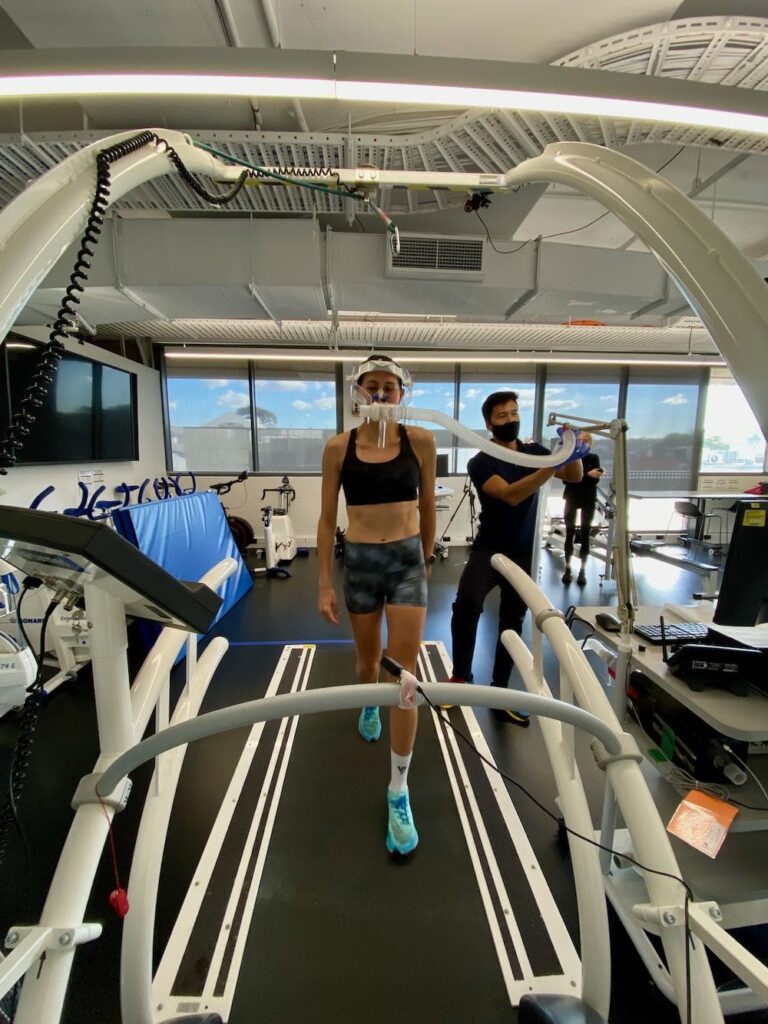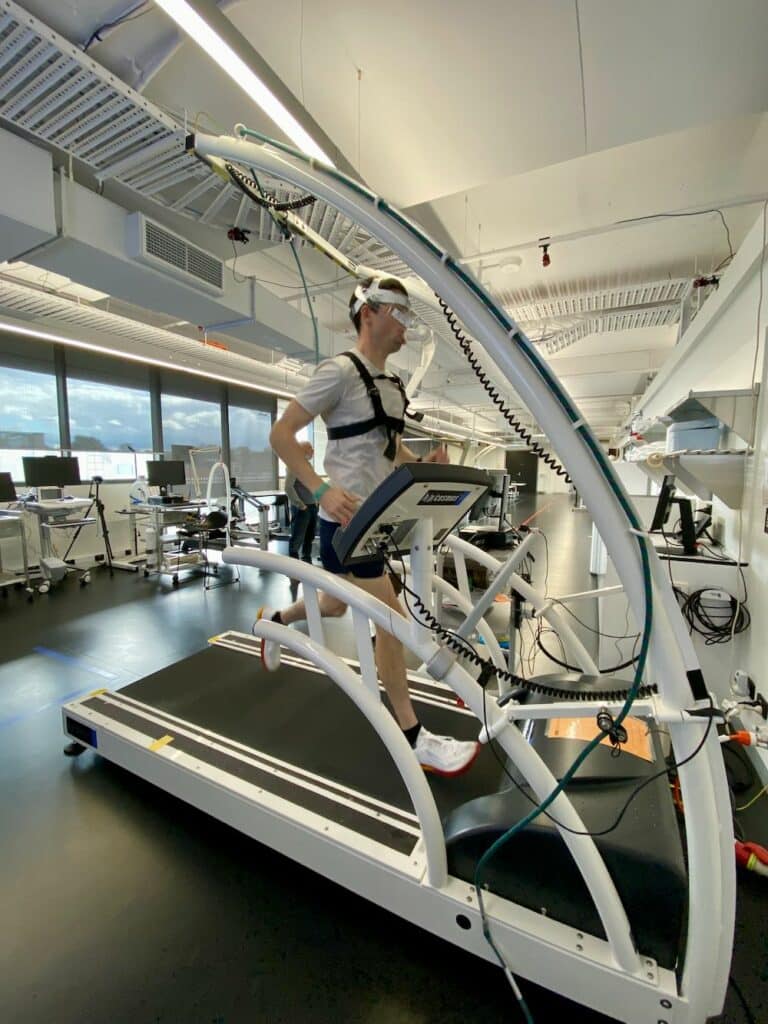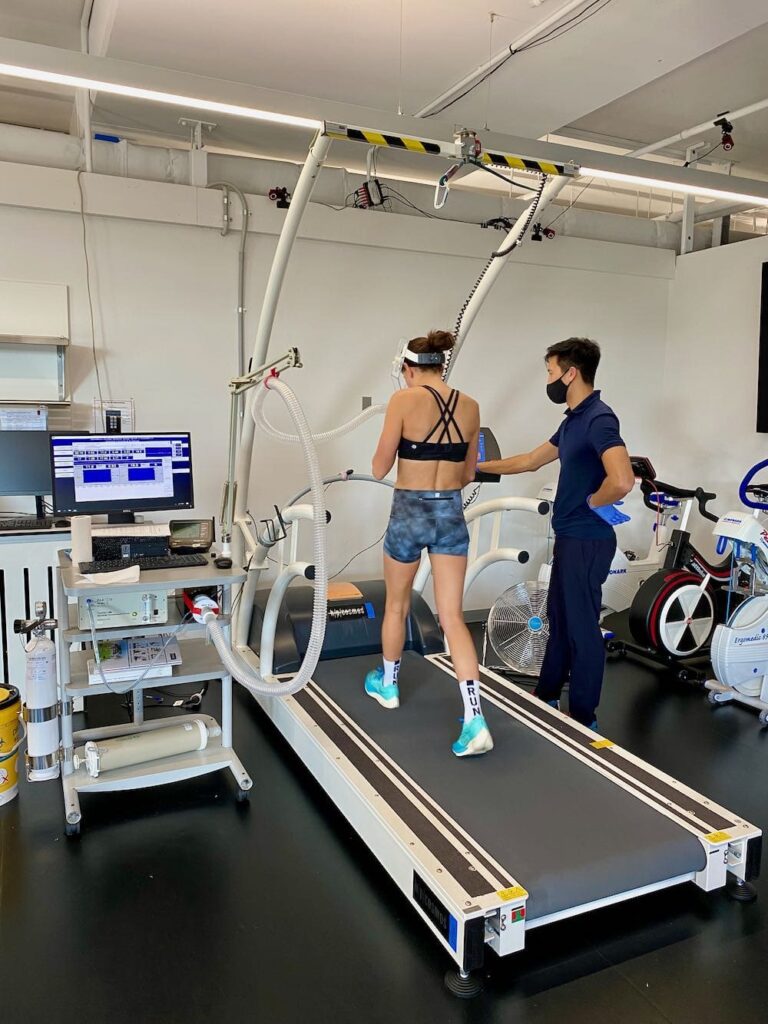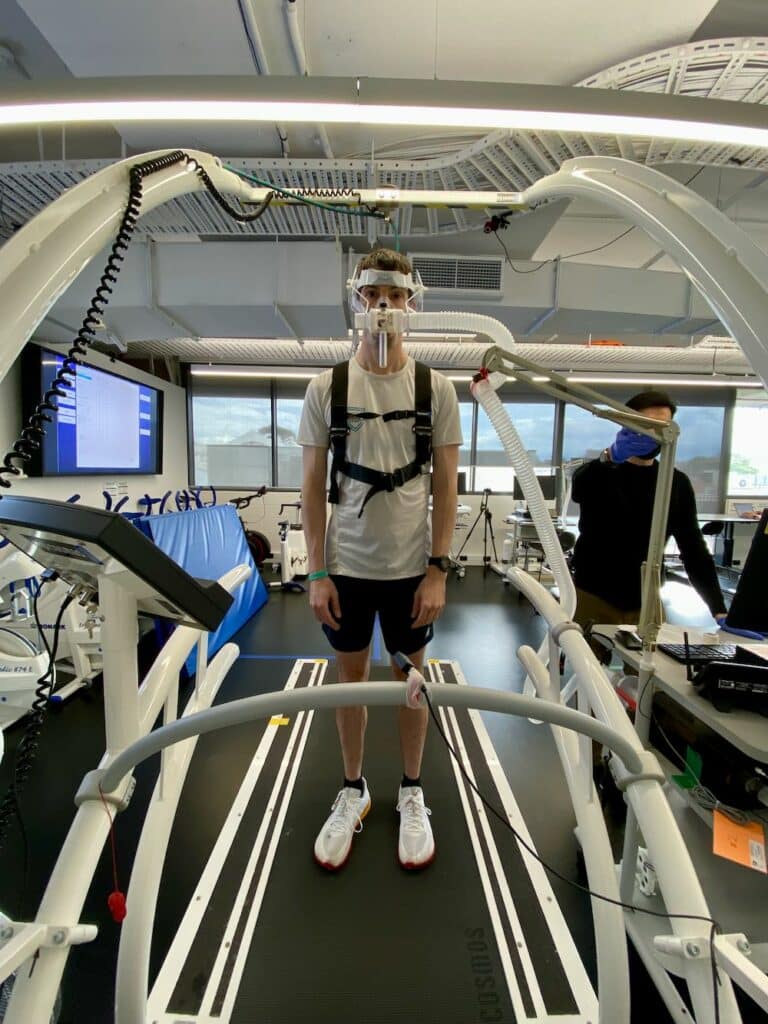VO2 Max and Lactic Acid Testing
South Yarra VO2 Max and Lactic Acid Testing
In conjunction with Swinburne University, South Yarra Spine & Sports Medicine is excited to offer VO2 Max and Lactate Threshold testing. Data from VO2 max testing can be integrated into a training plan to improve specificity of aerobic and anaerobic training to help athletes and fitness enthusiasts reach their peak performance levels.
VO2 max (also called maximal aerobic power or maximal oxygen uptake) is a measurement of the body’s capacity to take up, use, and transport oxygen during exercise. Although you can test your VO2 max using a field-based test, a VO2 max test performed in a physiology lab is the gold standard for measuring cardiovascular fitness.
To reach your VO2 max, you will run/cycle/row at a slowly increasing intensity until you reach exhaustion and need to stop. Although it can be useful to know your VO2 max, the information that is gained prior to reaching exhaustion is key to making your training more specific. Before you reach exhaustion, you will surpass two key performance indicators:
- Aerobic threshold / 1st ventilatory threshold (VT1): This is the maximal intensity you can sustain exercising before too much lactate builds up (due to lack of oxygen) and causes muscle fatigue. You should be able to sustain this intensity of exercise for approximately 2 hours (or more)
- 2nd ventilatory threshold (VT2): This is the point at which lactate is accumulating faster than can be broken down and used by the body via oxygen. This leads to lactate accumulation and subsequent fatigue. This intensity of exercise can only be sustained for 20-60 mins only.
Understanding your 1st and 2nd ventilatory threshold can make your training more specific, like understanding which training zone you should be in and when. From the VO2 testing results, your training sessions can be manipulated to better target your aerobic and anaerobic training zones.
Should you perform the test on a treadmill, bike or rowing ergometer?
We recommend that runners should perform the test on a treadmill, cyclists perform the test on a bike, and rowers perform the test on a rowing ergometer. This is to ensure that your results are as accurate to your situation as possible.
Do I need a lactate analysis?
A lactate analysis is not a ‘must’ but can add a level of security about your specific lactate threshold. If you opt to undertake a lactate analysis, you will know the specific heart rate when you reach your lactate threshold. Please note that due to OH&S reasons we cannot currently perform lactate testing on a treadmill or rowing ergometer. A lactate analysis can only be performed on a bike.
Where is the testing performed?
All testing is performed at the Exercise Physiology Laboratory at Swinburne University, Hawthorn Campus. All testing is performed using state of the art equipment with an Accredited Exercise Physiologist.
How long does the test take?
This will depend on fitness level, but most trained people will be exercising for 15 minutes. With time for set-up, active recovery, and small discussion about your results we recommend allowing 1 hour total.
What’s the investment?
$200 for the test and report. If you choose to undertake the lactate analysis this is an extra $80 (total of $280). Your report will be sent you within 24 hours of test completion.
I have the results – now what?
Well done on completing the test! Depending on your goals, we offer other services to optimise your training. If you are after a training program (eg. you want to complete a marathon but don’t know how to program your running training) the highly trained team at SYSSM can provide you with an individualised 12 week running training plan based on your VO2 max results. Or, you might like to get your strength, movement and running gait checked with our Clinical Run Assessment.
How do I book?
Call our front desk team on (03) 9826 2122 and ask to book in for a VO2 max test (with or without a lactate analysis).
Get In Touch
One body, keep moving for life.




